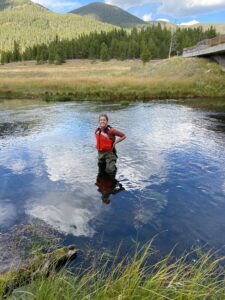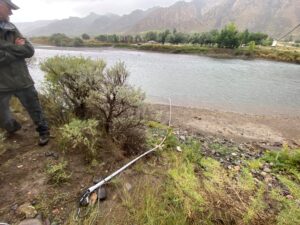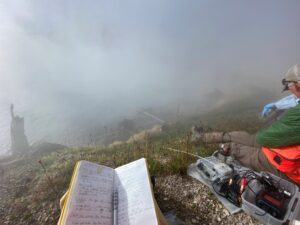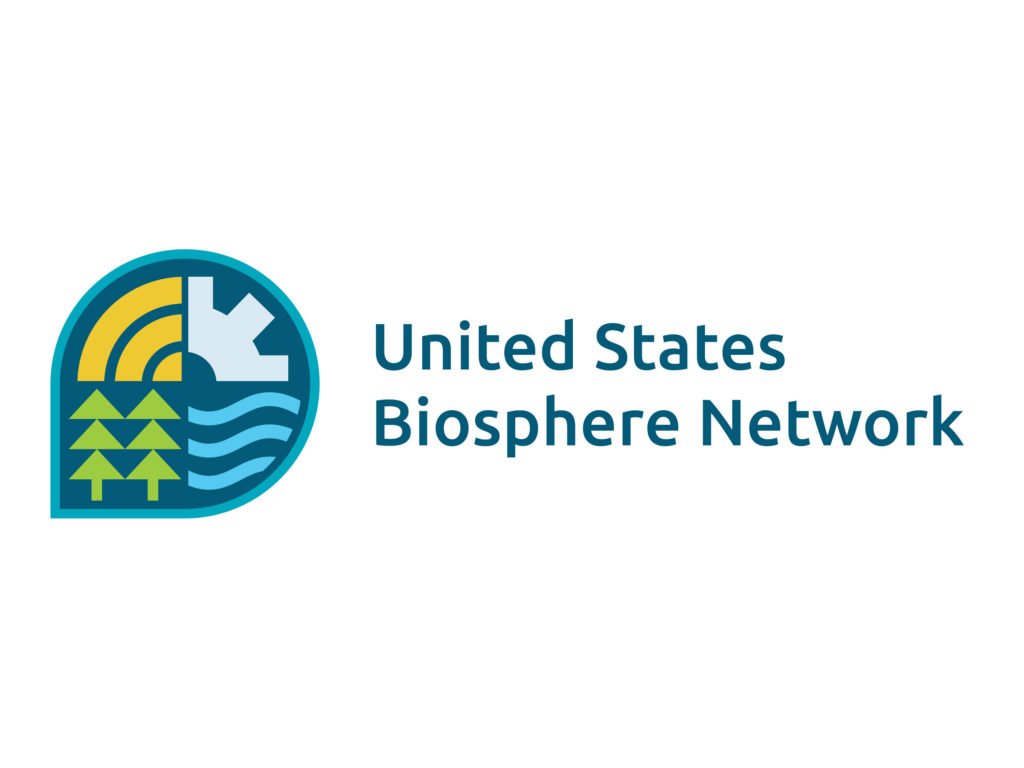
Margery Price, a Cascade Head Biosphere Region local, worked this past summer and fall with the U.S. Geological Survey expanding the accessibility of water chemistry data in Yellowstone National Park. Born and raised in Lincoln City, Oregon – a town contained within the Cascade Head Biosphere Region – Margery attended the University of Oregon and received her bachelor’s degree in Geology in 2022. In March 2021, Margery joined the inaugural Steering Committee of the US Biosphere Network Youth Board, serving as the group’s first secretary until January 2024.
From August through December 2023, Margery worked as an intern for the U.S. Geological Survey (USGS) in Boulder, Colorado. There, she worked with scientists who study the water chemistry of Yellowstone National Park, using the chemical components of rivers, thermal features, and lakes to better understand the complex geologic, hydrologic, and ecologic systems in the region. Margery’s main project was to produce a data release: a special type of USGS publication which makes large data sets easily accessible to the public.

For Yellowstone, this effort is especially crucial: scientists have been collecting water chemistry samples in and around the park since the 1870s, but the reports which contain historic data are often challenging to find, obtain, or even read.
The data set Margery created combines Yellowstone water chemistry measurements from nearly 5,000 samples across 38 different publications spanning 140 years of research– all of which is now simple to access and utilize for free through the UGSS webpage. Now, instead of combing through dozens of paper archives to extract relevant data, interested researchers or members of the public can find the information easily online, ready to use. The data release, undergoing the USGS review process as of early January 2024, is expected to be published by mid-February, and will be followed by several articles of the Yellowstone Caldera Chronicles weekly newsletter about the history of water chemistry research in Yellowstone.

In addition to her work creating the data release, Margery also had the opportunity to conduct field work with other USGS researchers. For 9 days in September 2023, the group collected water samples from rivers, streams, hot springs, and geysers throughout the Yellowstone region. This field work included careful navigation of thermal areas, maintenance of scientific equipment, and plenty of elbow grease and problem-solving, with an added bonus of beautiful views and fascinating geology!
Following the conclusion of her internship in December, Margery returned to her ongoing master’s research at the University of Oregon, where she studies the use of pumice as a filter for graywater. In May 2024, she will present more information on her data release project at the annual meeting of the Yellowstone Volcano Observatory, and throughout this year will lead several geoscience outreach events and field trips for local school groups in the Cascade Head Biosphere Region.
Margery’s work with the USGS was made possible by the YVO and the NAGT (National Association of Geoscience Teachers) Cooperative Summer Fellowship Program.



